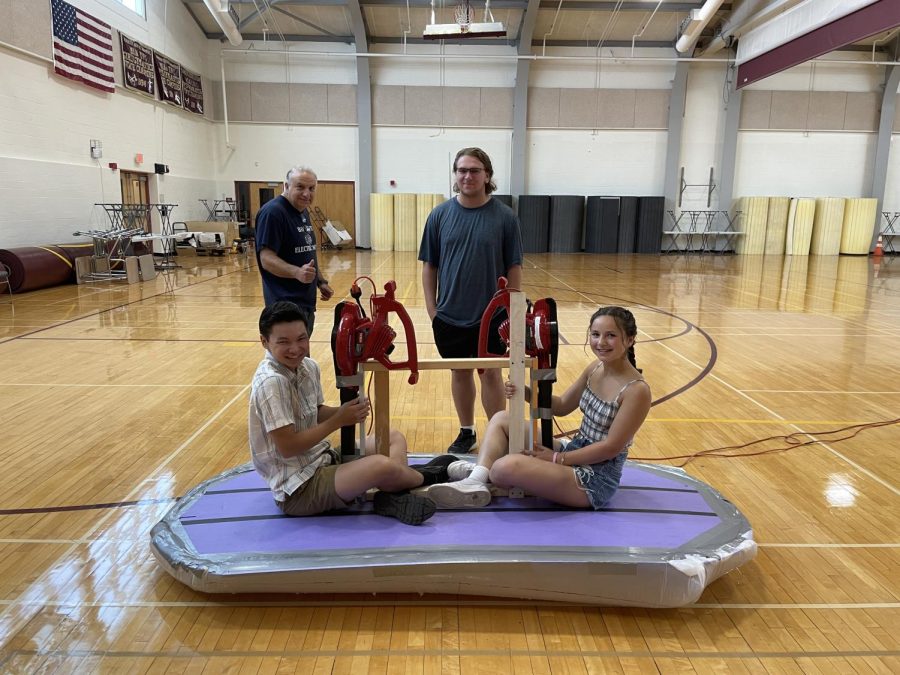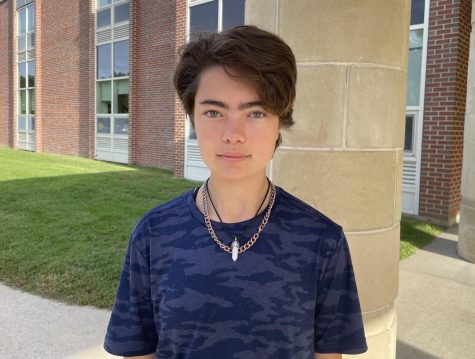New Hands-On Engineering course results in student-built hoverboard
After months of planning and construction, Hands-On Engineering students Class of 2023 graduate Michael Covino, junior Justice Huang and junior Ariella Zalev debuted their handmade hoverboard.
June 25, 2023
After months of planning and construction, Hands-On Engineering students debuted their handmade hoverboard.
Applied Arts and Technology teacher Ralph Arabian first introduced the Hands-On Engineering course this year in the hopes of inspiring students to complete large scale projects.
“I wanted the kids to learn about engineering and pneumatics,” Arabian said. “[The Hoverboard] was an engineering project that I designed many many years ago, and worked well for the new course. My philosophy in the classroom is to have kids have fun, but also while learning. I think this one came out excellent.”
After the completion of their first semester course, Class of 2023 graduate Michael Covino, junior Justice Huang and junior Ariella Zalev led the construction of the hoverboard after school for months, along with support from their friends and former classmates.
“The process began at the end of the first semester when we first saw how successful previous hoverboards were,” Huang said. “We really wanted to build something that was a little bit more excessive, a little bigger, a little more grandeur, so we chose to embark on a project that we felt would accomplish that mission.”
The hoverboard is made of a plastic sheet attached to the bottom of a wooden board, painted purple and black. It is powered by two leaf blowers that blow air through small holes in the sheet which allow the air to escape and propel the craft above the ground. The build allows it to glide across the floor while supporting the weight of up to eight students.
“I’ve got very bright students,” Arabian said. “Usually we’d use half a sheet of plywood, so we have about 16 square feet, but this one was about 32 square feet. This is all about engineering, having fun and redesigning and learning from it.”
The Hands-On Engineering class made several large scale projects such as battlebots, flying machines and paper airplanes, but the hoverboard was their largest endeavor.
“The process consisted of a lot of trial and error, experiment after experiment, but eventually we were able to accomplish our goal of getting a working hovercraft to glide across the gym,” Huang said. “I’m very very proud of how the hoverboard came out and so grateful to everyone that helped us. It was a major team effort to accomplish this project and on the scale of things it just simply could not have been done as one or two people.”
While the students all agreed that their success would have been impossible without Arabian, they wished they had done a few things differently for the project.
“I most regret the color scheme,” Covino said. “I probably would have gone for Algonquin colors so we could use it as propaganda for events like the Pep Rally.”
Zalev highly recommended students take Hands-On Engineering in the future to get involved in very unique projects and experiences.
“It’s just a great course,” Zalev said. “There are so many learning opportunities and creative outlets available.”
Arabian felt Hands-On Engineering gave valuable lessons and experiences to students, and plans to expand it in the future.
“[Hands-On Engineering] is essential because it shows not only engineering, but teamwork, how to get along with people in the real world, and there’s a lot of real world experiences in this one class,” Arabian said. “It was a fun and exciting project, and I plan to have more fun and exciting new innovative projects to engage kids in the future.”










